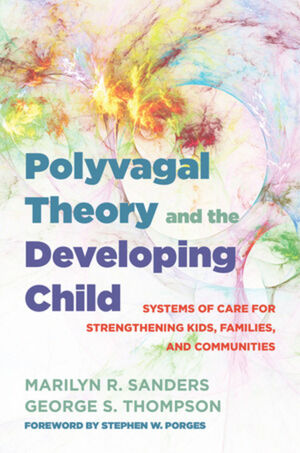How sustained disruptions to children’s safety have physical, behavioural, and mental health impact that follow them into adulthood.
At its heart, polyvagal theory describes how the brain’s unconscious sense of safety or danger impacts our emotions and behaviours. In this powerful book, paediatrician and neonatologist Marilyn R. Sanders and child psychiatrist George S. Thompson offer readers both a meditation on caregiving and a call to action for physicians, educators, and mental health providers. When children don’t have safe relationships, or emotional, medical, or physical traumas punctuate their lives, their ability to love, trust, and thrive is damaged. Children who have multiple relationship disruptions may have physical, behavioural, or mental health concerns that follow them into adulthood.
By attending to the lessons of polyvagal theory—that adult caregivers must be aware of children’s unconscious processing of sensory information—the authors show how professionals can play a critical role in establishing a sense of safety even in the face of dangerous, and sometimes incomprehensibly scary, situations.
Author Bio:
Marilyn R. Sanders, MD, is a paediatrician/neonatologist and professor of paediatrics at Connecticut Children’s Medical Centre in Hartford, Connecticut.
George S. Thompson, MD, is a child psychiatrist who assists healthcare organizations in building emotionally safe, curious, and collaborative cultures. He lives and works in the Kansas City area.
Review:
“In Polyvagal Theory and the Developing Child, Marilyn Sanders and George Thompson apply the principles of Polyvagal Theory to explore the disruptions to connection the children and families they serve experience on the journey from conception through adolescence and the impact of those traumatic moments. Drawing on wisdom from years of practice, they present a framework grounded in neurobiology and brought alive in clinical stories that weaves the essential ingredients of safety and connection into clinical interactions. With this beautifully written exploration of the science of safety, Drs. Sanders and Thompson offer a guide to engaging the vagal pathways embedded in our biology and creating the social connections that are the foundation of well-being” – Deb Dana, LCSW, author of The Polyvagal Theory in Therapy: Engaging the Rhythm of Regulation.






